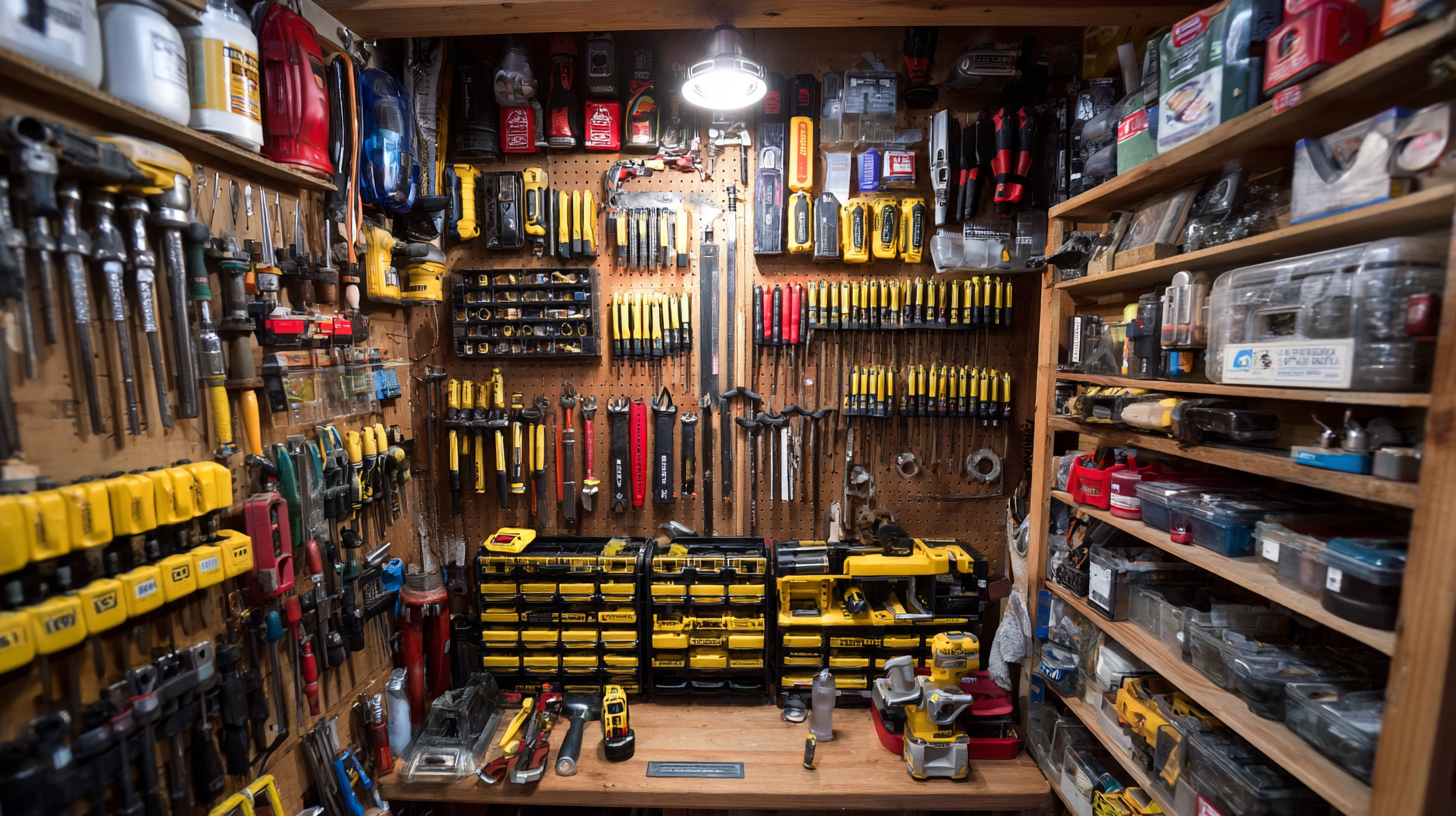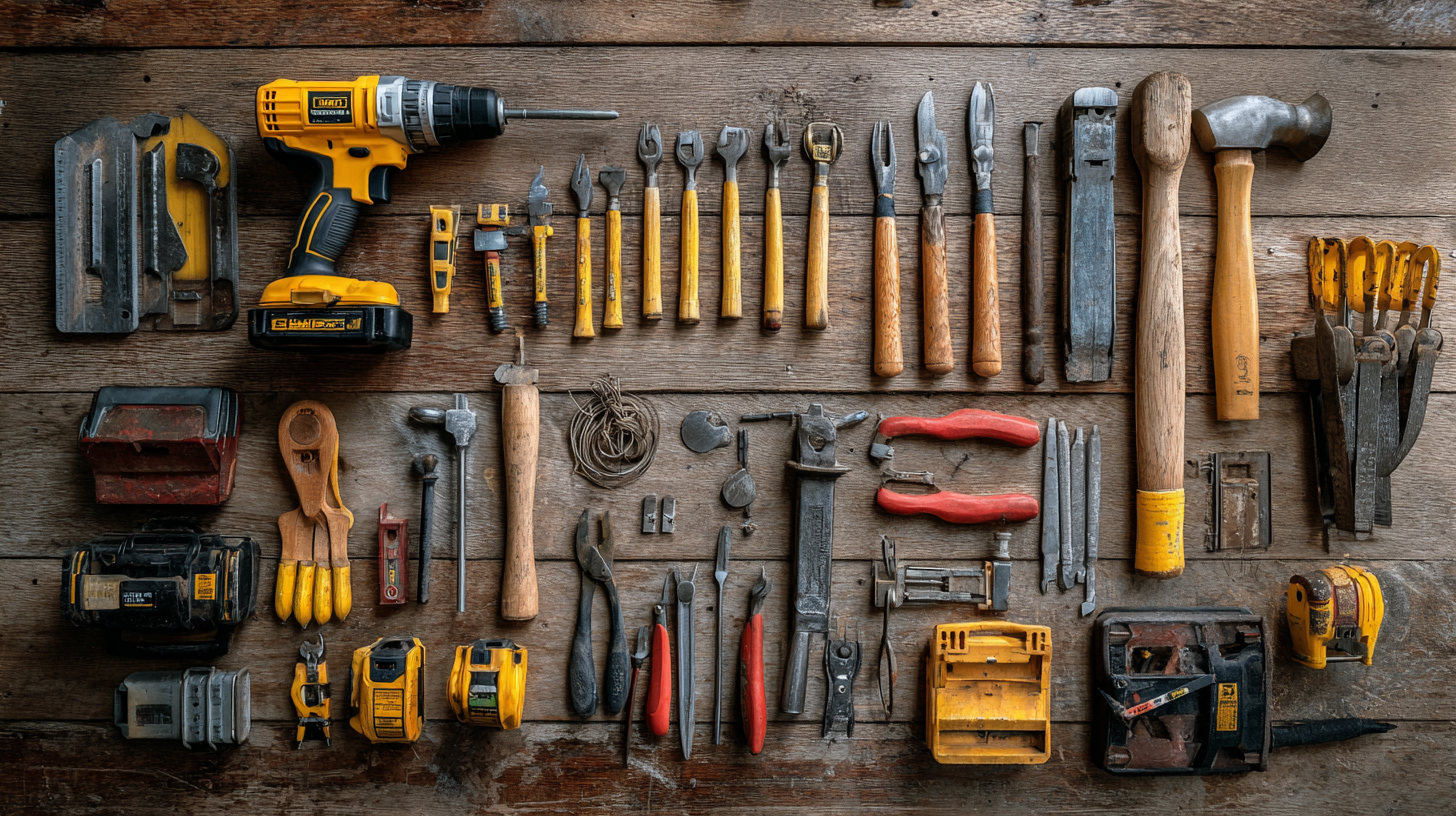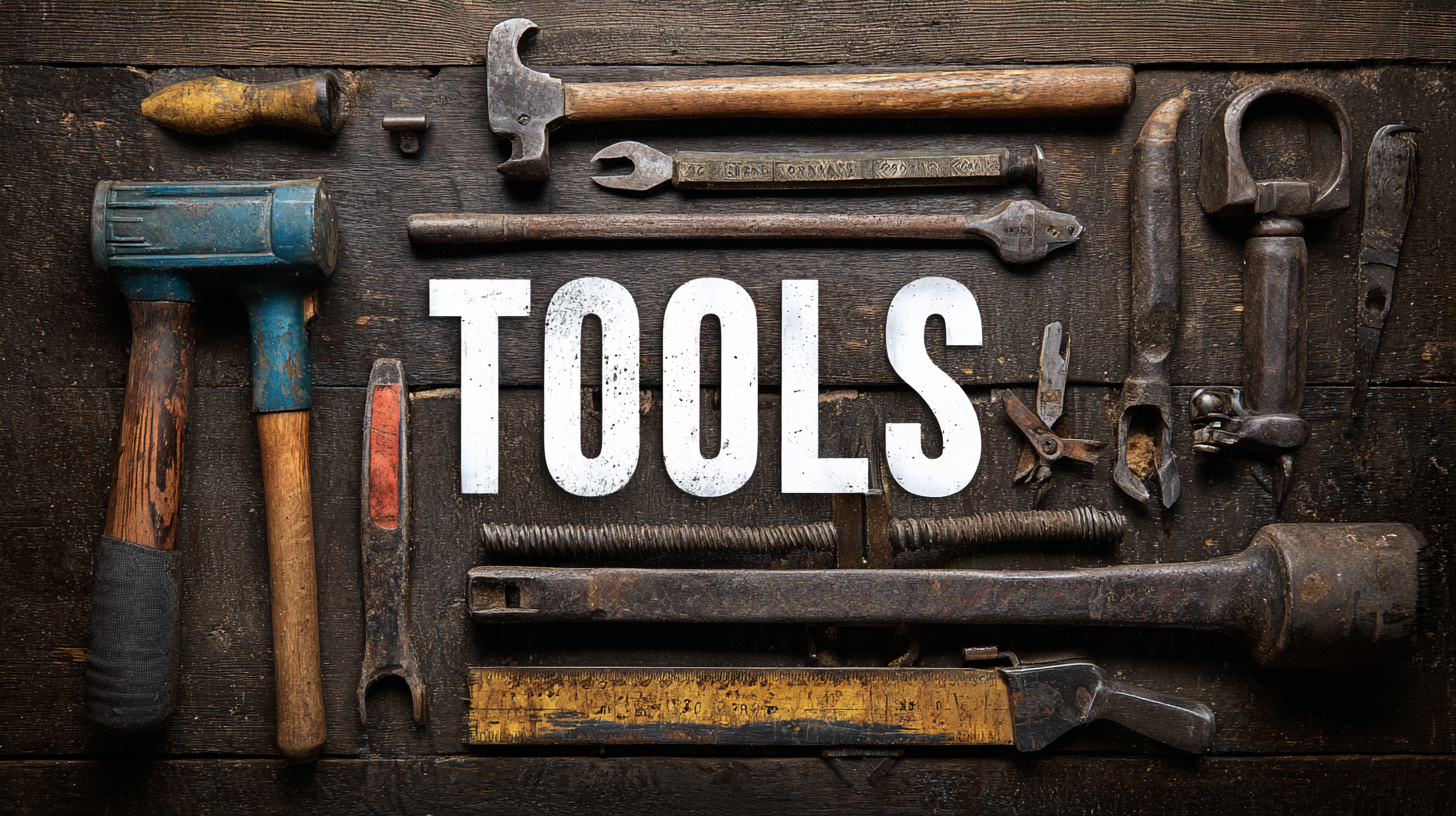Blog
How to Choose the Best Tools for Your Home Projects
Choosing the right tools for your home projects can be a daunting task, especially with the myriad options available in the market today. According to a report by the Home Improvement Research Institute, nearly 80% of homeowners engage in DIY projects annually, highlighting the growing importance of selecting appropriate tools. As a crucial aspect of successful home improvements, "Tools House" plays a pivotal role in ensuring that tasks are completed efficiently and effectively. Furthermore, a study by Statista indicates that the global market for power tools is expected to reach $40 billion by 2025, suggesting a strong emphasis on tool quality and performance among consumers. Understanding the various alternatives and weighing their pros and cons is essential for any DIY enthusiast or homeowner looking to invest wisely in their toolkit.

Identifying Your Home Project Needs: A Comprehensive Checklist
When embarking on home projects, identifying your specific needs is crucial for success. A comprehensive checklist can help streamline the process and ensure you have all necessary tools. Begin by delineating the scope of your project – whether it's a simple repair, a renovation, or a full-scale remodel. Consider the materials you’ll be working with and the skills required to complete the task. This clarity will guide you in selecting the right tools, from basic hand tools like screwdrivers and hammers to more specialized equipment such as saws and drills.
Next, evaluate the frequency of use for each tool you consider. If it’s a one-time project, renting equipment might be more cost-effective than purchasing. However, for ongoing maintenance or frequent tasks, investing in high-quality tools is advisable. Additionally, think about storage space and safety features; a well-organized workspace with appropriate safety gear can enhance efficiency and reduce the risk of accidents.
With a clear understanding of your needs, you can confidently choose the best tools to tackle your home projects effectively.
Essential Tools Every Homeowner Should Have for DIY Projects
When it comes to tackling home improvement projects, having the right tools is essential for achieving a successful outcome. According to a report by the Home Improvement Research Institute, over 70% of homeowners engage in DIY projects each year, and a well-equipped toolkit can make all the difference. Essential tools include a versatile cordless drill, which 80% of DIYers cite as their go-to tool for a range of tasks, from assembling furniture to drilling holes. A good-quality set of hand tools, such as screwdrivers, wrenches, and pliers, is equally important, as these basics support a wide variety of home repairs.
In addition, safety gear should not be overlooked. The Occupational Safety and Health Administration (OSHA) reports that falls and injuries are common in home improvement projects, therefore investing in protective equipment like safety goggles, gloves, and dust masks is crucial. Keep in mind that a measuring tape and a level are fundamental for ensuring precision in your work, with studies indicating that about 30% of DIY mistakes stem from inaccurate measurements. By equipping yourself with these essential tools, you can confidently embark on your home projects and avoid common pitfalls that many DIY enthusiasts face.
How to Choose the Best Tools for Your Home Projects - Essential Tools Every Homeowner Should Have for DIY Projects
| Tool Name | Purpose | Recommended Features | Usage Frequency |
|---|---|---|---|
| Hammer | Driving nails into wood | Comfortable grip, suitable weight | Daily/Weekly |
| Screwdriver Set | Driving screws | Magnetic tips, multiple sizes | Often |
| Tape Measure | Measuring lengths | Locked measurement, durable material | Frequently |
| Power Drill | Drilling holes, driving screws | Cordless, variable speed | Regularly |
| Level | Ensuring surfaces are even | Durable, easy-to-read markings | As needed |
| Pliers | Gripping and twisting objects | Ergonomic handles, multiple functions | Regularly |
Evaluating Tool Quality: What to Look For Before You Buy
When selecting tools for your home projects, evaluating tool quality is essential to ensure lasting performance and safety. Start by examining the materials used in the tool's construction. High-quality tools are typically made from durable metals such as steel or titanium, which provide strength and resist wear over time. Plastic components should also be robust, as they often take a beating during use. Look for tools that have been treated for corrosion resistance, especially if they will be exposed to moisture or harsh conditions.

Next, consider the design and ergonomics of the tool. A well-designed tool not only fits comfortably in your hand but also allows for better control and precision. Check for features like non-slip grips, balanced weight, and intuitive controls. Reading user reviews can give you insights into real-world performance and comfort levels, helping you gauge whether a tool meets practical needs. Lastly, don’t forget to check for warranties or guarantees from manufacturers, as these can be indicators of a tool’s quality and the company's confidence in its durability.
Budgeting for Your Tool Shopping: Essential Tips and Suggestions
When embarking on home projects, budgeting for your tools is just as crucial as the projects themselves. Understanding your financial limits can help you prioritize which tools are essential and avoid overspending on unnecessary gadgets. Begin by making a list of the tools you truly need for your upcoming projects, separating them into must-haves versus nice-to-haves. This clarity will guide your purchasing decisions and help you allocate your budget efficiently.
A great tip for budgeting is to research and compare prices before making any purchases. Online retailers, local hardware stores, and tool rental shops often have different price points, so take advantage of promotions and sales. Consider investing in quality over quantity; sometimes, purchasing a higher-quality tool can save you money in the long run due to durability and efficiency. Don’t forget to factor in maintenance costs as well, as this can influence your overall budget for each tool. With careful planning and smart shopping, you can equip yourself with the right tools without breaking the bank.
Budgeting for Your Tool Shopping
Safety Gear: Must-Have Equipment for Protecting Yourself During Projects
When embarking on home projects, prioritizing safety should be at the forefront of your planning. Essential safety gear not only safeguards you from potential injuries but also ensures a smoother workflow. First and foremost, invest in a good pair of safety goggles to protect your eyes from dust, debris, and harmful substances. Whether you're cutting wood or mixing chemicals, having the right eye protection is crucial.

Additionally, wearing a well-fitting mask can significantly reduce your risk of inhaling harmful particles or fumes. Look for masks with proper filtration, especially when working with materials like paint, insulation, or wood dust. Another vital piece of safety equipment is a sturdy pair of gloves. They not only protect your hands from cuts and abrasions but also provide grip while handling tools and materials.
Tip: When selecting safety gear, always opt for equipment that meets industry standards. It’s worth the investment to ensure you have reliable protection. Don’t forget to keep your safety gear in good condition; regularly check for wear and tear, and replace items as necessary to maintain optimal safety during your projects.
